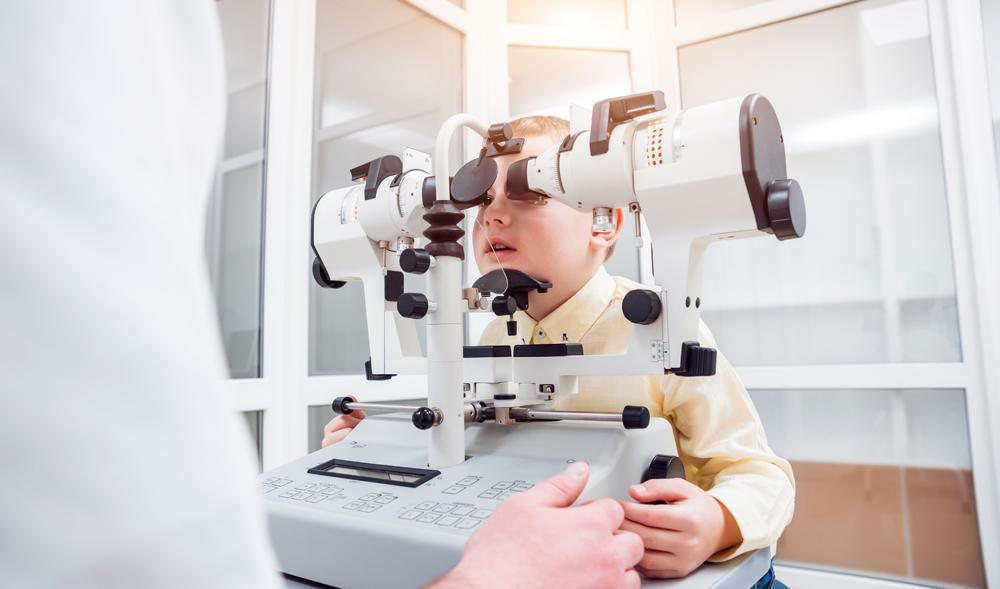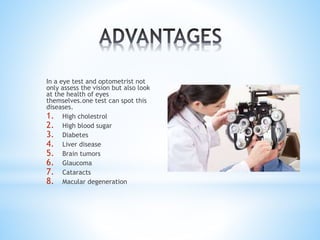Comprehensive Retina Service Near Me: Advanced Eye Health Care
Comprehensive Retina Service Near Me: Advanced Eye Health Care
Blog Article
The Duty of Advanced Diagnostic Tools in Identifying Eye Disorders
In the realm of ophthalmology, the use of innovative diagnostic tools has transformed the very early identification and management of different eye conditions. From detecting subtle changes in the optic nerve to monitoring the development of retinal illness, these technologies play a critical function in improving the accuracy and effectiveness of identifying ocular conditions. As the demand for precise and prompt medical diagnoses remains to expand, the combination of innovative devices like optical coherence tomography and visual field testing has actually become vital in the realm of eye care. The elaborate interplay in between modern technology and sensory methods not only sheds light on elaborate pathologies however also opens up doors to customized treatment techniques.
Importance of Early Medical Diagnosis
Very early medical diagnosis plays an essential function in the reliable administration and treatment of eye conditions. Timely identification of eye problems is important as it permits punctual intervention, possibly avoiding additional progression of the illness and minimizing long-lasting complications. By identifying eye disorders at a very early stage, health care service providers can provide ideal treatment strategies customized to the specific problem, inevitably leading to much better end results for patients. Very early medical diagnosis enables clients to gain access to needed assistance solutions and sources earlier, improving their general top quality of life.

Modern Technology for Identifying Glaucoma
Sophisticated analysis innovations play an important role in the very early discovery and tracking of glaucoma, a leading reason for permanent blindness worldwide. One such modern technology is optical coherence tomography (OCT), which provides thorough cross-sectional pictures of the retina, permitting the dimension of retinal nerve fiber layer thickness. This measurement is crucial in analyzing damages brought on by glaucoma. An additional sophisticated tool is aesthetic field screening, which maps the sensitivity of an individual's visual area, helping to detect any kind of areas of vision loss feature of glaucoma. Furthermore, tonometry is made use of to determine intraocular stress, a major threat factor for glaucoma. This examination is essential as elevated intraocular stress can lead to optic nerve damages. More recent technologies like the usage of fabricated intelligence algorithms in examining imaging information are showing encouraging results in the early detection of glaucoma. These innovative analysis tools enable eye click doctors to detect glaucoma in its onset, permitting prompt treatment and better management of the illness to stop vision loss.
Role of Optical Coherence Tomography

OCT's ability to evaluate retinal nerve fiber layer thickness permits exact and objective dimensions, helping in the early discovery of glaucoma even prior to visual area problems emerge. Additionally, OCT technology allows longitudinal tracking of structural modifications over time, promoting individualized therapy plans and prompt interventions to assist preserve individuals' vision. The non-invasive nature of OCT imaging also makes it a favored selection for keeping an eye on glaucoma progression, as it can be repeated consistently without causing discomfort to the person. Overall, OCT plays a vital duty in enhancing the diagnostic accuracy and administration of glaucoma, ultimately contributing to much better end results for people in jeopardy of vision loss.
Enhancing Diagnosis With Visual Field Testing
An important component in comprehensive ophthalmic evaluations, visual area screening plays a crucial function in improving the diagnostic process for various eye problems. By analyzing the complete level of an individual's visual field, this test provides crucial details regarding the functional integrity of the whole visual path, from the retina to the aesthetic cortex.
Visual area testing is especially important in the medical diagnosis and administration of conditions such as glaucoma, optic nerve problems, and different neurological diseases that can influence vision. With quantitative dimensions of peripheral and main vision, clinicians can spot refined modifications that may suggest the presence or development of these conditions, also before recognizable signs take place.
Moreover, visual area testing enables the monitoring of therapy efficacy, assisting eye doctors tailor restorative interventions to private people. eyecare near me. By tracking changes in aesthetic area efficiency over time, health care providers can make educated choices about changing drugs, recommending surgical treatments, or applying other suitable actions to protect or enhance a person's visual function
Handling Macular Deterioration

Final Thought
In verdict, progressed diagnostic tools play a vital duty in click for source identifying eye conditions early on. Technologies such as Optical Comprehensibility Tomography and aesthetic area screening have actually greatly enhanced the accuracy and effectiveness of detecting problems like glaucoma and macular deterioration.
Report this page